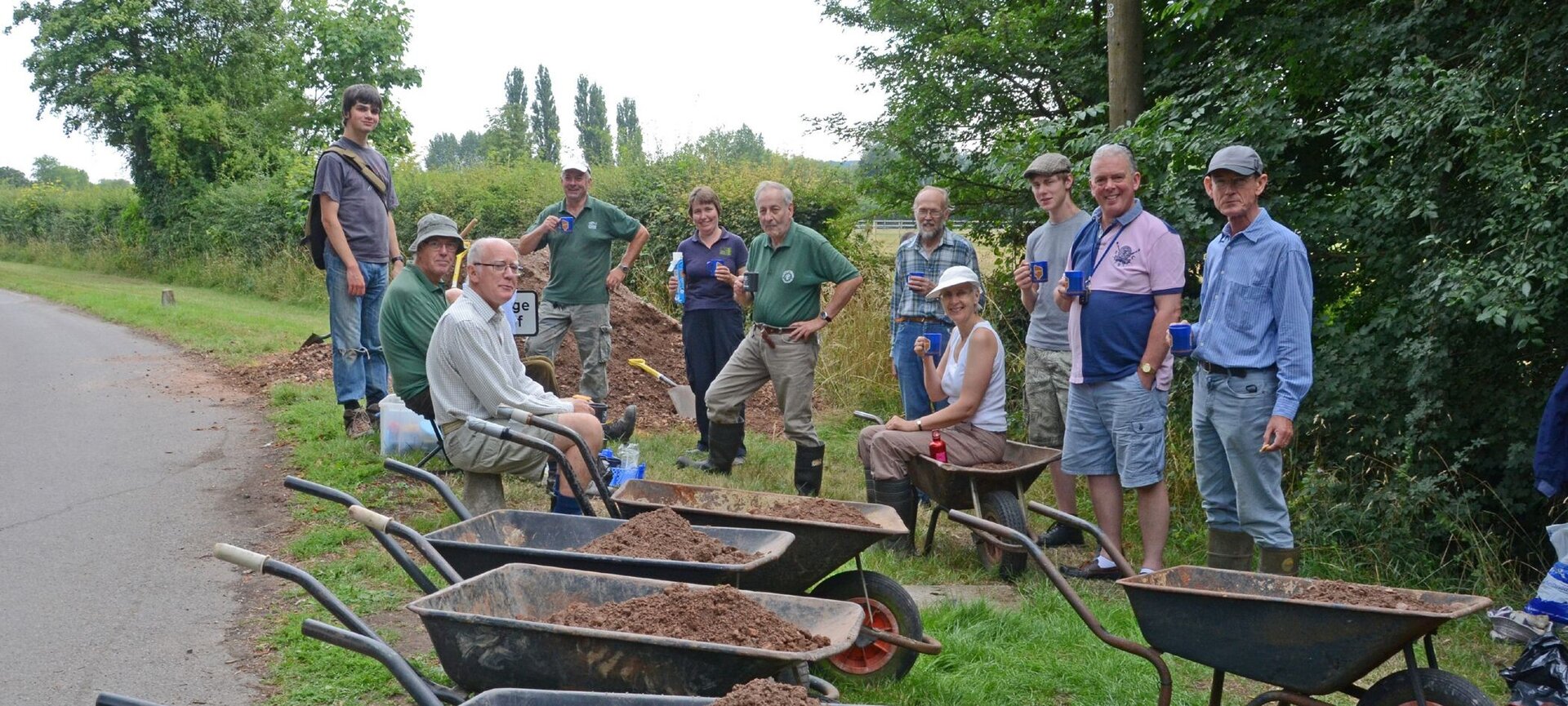Jim Jones continues...
"The Rye is classed as a 'heavily modified water body' by the Environment Agency," Jim said, "which means it has been altered from its original course or shape to provide functions such as flood alleviation or water storage. The Brook is also failing to meet standards as set by European Laws because of barriers to fish migration (such as weirs) and lack of habitat for wildlife. As with all rivers in Surrey, the Brook also suffers from an overload of phosphate from untreated effluent and fertilisers applied to fields throughout the catchment, causing blooms of algae and the choking of channels with vegetation."
The volunteers got stuck in to a varied work programme. In places the channel is overgrown with thick scrub and tree cover, blocking out light needed by plants and insects to thrive; without these of course there is no food for birds, fish and mammals like the endangered water vole. Armed with loppers and saws the volunteers applied muscle-power to 'daylight' the Brook. There were also new skills to learn to improve the shape of the channel and create habitat within it: the installation of logs acting as deflectors to encourage straightened sections of the stream to re- meander, and the building of ledges - using willow and hazel - where plants such as sedges, rushes and yellow flags can thrive. Meanwhile, SWT provided the machinery necessary to scallop the edges of the Brook lowering the banks where the sunken channel has become disconnected from its flood plain. The Lower Mole Countryside Management Project and City of London Corporation at Ashtead Common have a history of work on improving the Brook, including an ambitious restoration project at Ashtead Common some years ago.
Now the Rye Brook Restoration Project harnesses their skills and those of other organisations with a vision to improve the Rye Brook from source to the confluence with the Mole near Fetcham Splash. Working at Ashtead Rye Meadows and the adjacent Kestrel Field, River Lane Meadows and Teazle Wood, restoration work was carried out on both public and private land.
Daphne Burnett, owner of the Ashtead Rye Meadows, is a keen supporter of the project. "We have been working to improve the river through the Rye Meadows for a number of years now and have recently won funding for the creation of wetlands on the site. It's so important for our work to be part of a bigger project looking at improving the whole of the Rye for wildlife and local residents to enjoy"
Just downstream on the other side of the M25, the Friends of Teazle Wood who successfully fought to save an ancient woodland are delighted to be improving the Brook than runs along the edge of the wood. "The Rye in Teazle Wood has long been lost under the trees, shrubs and fly-tipping, and has been impounded between straightened channels, in places reinforced with metal piling" said Lucy Quinnell, Chair of the Friends. "We are proud to be working together with others to bring the light back to the Rye. There are ongoing problems from litter and fly-tipping into the stream, and we are working with the local residential and business community to address this situation."
Jim Jones is delighted with the progress of the Project. "It is really heartening to see local people take responsibility and work together for this forgotten stretch of the Rye. It's a perfect example of the Living Landscape that is Surrey Wildlife Trust's vision for the county. There is plenty to do, and we need the support of the local businesses that benefit from increased trade with an improved and accessible local river. Most importantly, where there are impacts from pollution in the Rye Brook, those responsible have a duty to repair the damage."
Alex Learmont, a RiverSearch volunteer who helped at Kestrel Field, Ashtead Rye Meadows and River Lane Meadows said "Working on the Rye Brook this spring has been a fantastic experience. Not only have I gained practical skills, such as using a bow saw and hand axe, and got to meet other like-minded people, but I know I have done my bit to help improve this stretch of the Rye Brook. By letting in more light to the river channel and naturally encouraging it to 're-meander', it may help bring back important species like mayflies, kingfishers and water voles. A healthier Rye Brook, rich in wildlife, will hopefully be enjoyed by local residents and improve the area to the benefit of all."
On 9 June 2015 Surrey Wildlife Trust hosted a 'Love Your River' event at the Letherhead Institute to celebrate the work achieved so far and share ideas for the future.
Thanks to the Leatherhead & District Countryside protection Society for this article. (Summer Issue 2015 Issue 70)
